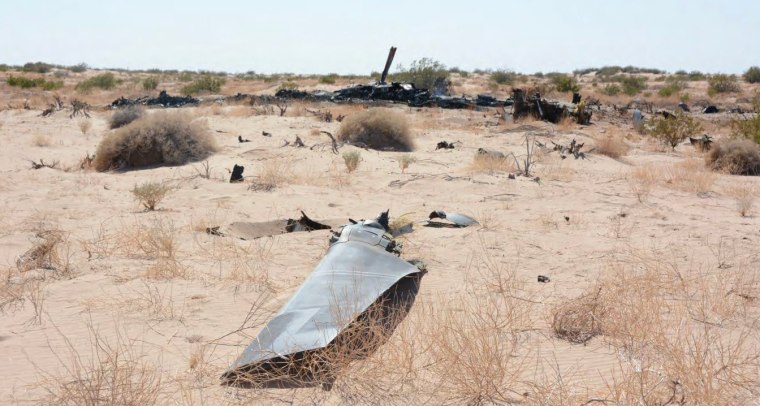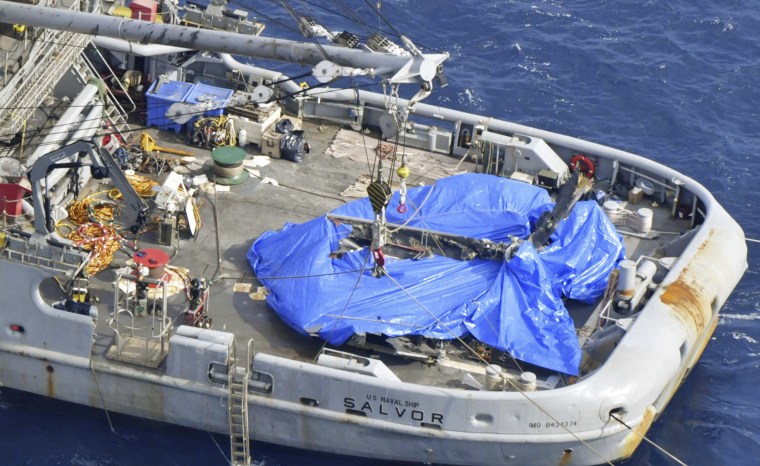Congress says Pentagon is not providing key info in investigation of fatal Osprey crashes

Congressional investigators say their six-month investigation into crashes of the military’s Osprey aircraft has been stymied by Pentagon officials who refuse to release critical safety investigation reports.
The inquiry by the House Oversight Committee was launched after 20 service members died in four separate Osprey crashes in less than two years, leaving grief-stricken families demanding answers about why the twin-rotor aircraft has had so many accidents.
Three Pentagon officials will face questions from House Oversight Committee members Wednesday morning on Capitol Hill and families of loved ones who died in the crashes plan to attend.

Reached at their home in New Mexico, Michelle and Wayland Strickland, who lost their son Lance Cpl. Evan Strickland in a Marine Osprey crash in California in June 2022, said they planned to fly to Washington overnight to arrive in time to attend the hearing.
“I’d say we are hopeful that this is the beginning of true oversight of the problems that have plagued the Osprey platform over the years and we hope it will lead to safety for those who use it in the future,” said Wayland Strickland.
In prepared testimony, committee chair Rep. Glenn Grothman, R-Wisc., said, “Since the V-22 became operational, it has been involved in multiple crashes during training exercises, resulting in the loss of over 50 service members’ lives. These incidents have earned the Osprey the troubling nickname ‘widow maker,’ highlighting the grave concerns surrounding its safety and reliability.”
In joint testimony submitted ahead of the hearing, Vice Adm. Carl Chebi, commander of Naval Air Systems Command, and Gary Kurtz, program executive officer for the Air, Anti-Submarine Warfare, Assault and Special Mission Programs at the Pentagon, said that the rate of serious mishaps for the Osprey has the “full attention and support of Navy, USMC and USAF leadership.” They wrote that they are focused on “addressing this issue with a clear understanding that there is much work still to be done.”
Class A mishaps, meaning incidents that result in a permanent disability to a service member, death or at least $2.5 million in damage to the aircraft, are the most serious category of military accidents.
In recent years there has been a rise in Osprey Class A mishaps.
In 2020 and 2021, there were two Class A mishaps, but no fatalities. In 2022 and 2023, however, there were 11 Class A mishaps, four of them fatal, according to military data reviewed by NBC News.
Class A incidents are followed by military accident investigations.
Military accident investigations into fatal crashes are posted online and available through Freedom of Information requests.
After a Class A incident, the military also convenes a Safety Investigation Board to investigate the root cause of the crash and make recommendations to prevent future accidents. The board issues a safety report.
Safety Investigation Board reports historically are not released, according to a former military crash investigator.
The House Oversight Committee says it was denied access to the Safety Investigation Board reports because Pentagon officials said that the reports are privileged.
Committee staff say they offered to review the reports in a secure location but the Pentagon declined to share them.
Committee staff say that so far what they have received from the Pentagon amounts to what is already publicly known about the Osprey’s mishaps.
The Pentagon’s Joint V-22 Program Office did not immediately respond to a request for comment about the committee’s assertions.

The latest Osprey crash in November 2023 in Japan led to the grounding of all 386 operational Osprey aircraft across the Navy, Air Force and Marines. The grounding lasted from December to March, after which the military determined the aircraft was safe for a limited return to flight. Since the grounding was lifted the aircraft has flown 7,000 hours, according to testimony from Pentagon officials. Ospreys will not be fully operational until mid-2025, according to the testimony.
Kurtz and Chebi note that the Safety Investigation Board on the Japan crash determined that the cause of the crash was a “catastrophic aircraft mechanical failure that had never been seen before in the V-22 fleet.”
NBC News reported in February that the Japan investigation was focused on the aircraft’s propeller rotor gearbox.
The investigation into the Japan crash in November and a separate crash investigation into an Australian crash in August are ongoing.
Four families who lost loved ones in the June 2022 crash have filed a lawsuit against Osprey manufacturers Boeing, Rolls-Royce and Bell-Textron demanding answers about problems with the aircraft.
“We are pleased that Congress and members of this Committee are focusing much needed attention on the safety of our service members who fly and rely upon the V-22 Osprey,” said plaintiffs’ attorney Timothy Loranger, a Marine veteran, pilot, and former military aircraft mechanic. “We’re hopeful that this hearing will lead to a call for increased transparency from the manufacturers about historical issues and current efforts to identify and eliminate the root cause of recent mishaps. Osprey crews and their families deserve assurances that their beloved aircraft are safe and airworthy.”







